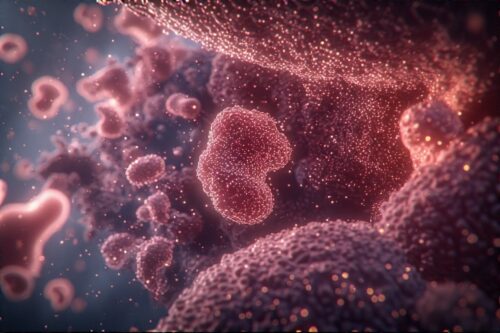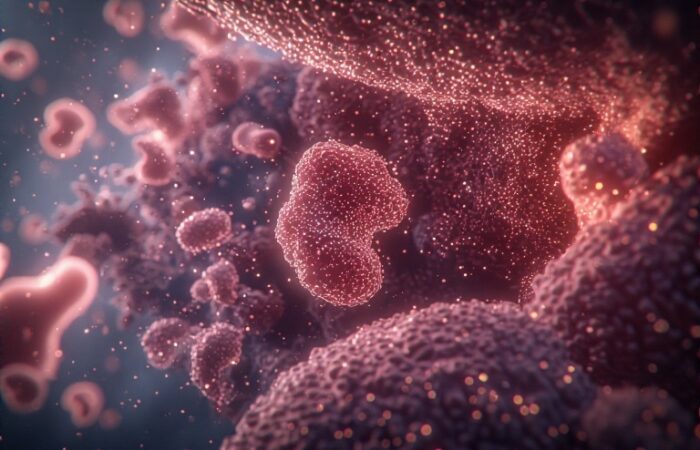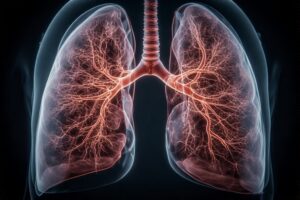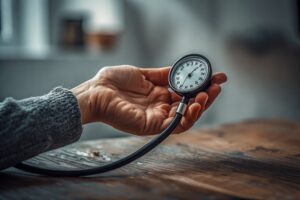
The phone rang. Just a regular Tuesday afternoon. Dishes piled in the sink, laundry mocking me from the couch. I picked up, expecting a telemarketer or maybe my mom.
“Hi, is this Sarah?” A voice, professional but with an edge I couldn't place. “It's Dr. Chen's office. Regarding your bloodwork…”
My stomach did this weird flip-flop thing. Bloodwork? Oh, right. That panel they ran a couple of weeks ago during my physical. Routine stuff. Or so I thought. I’d been feeling run-down for months, chalked it up to stress, bad sleep, maybe getting older. My joints ached like an old porch swing. But honestly? I figured I just needed more coffee and maybe a vacation I couldn’t afford.
The results came back positive,” the nurse continued, her voice softening. “For Hepatitis C.”
Silence. Like, deafening silence. The dripping faucet in the kitchen sounded like a jackhammer. Hepatitis C? Me? How? My mind raced – tattoos? That sketchy piercing place in college? A forgotten accident? It felt like a punch straight to the gut. Vague memories of scary public service announcements from the 90s flashed through my head – images of failing livers, doom, gloom. Panic, cold and slick, started crawling up my spine.
That word – positive – it hung in the air, heavy and toxic. It wasn't just a test result; it felt like a life sentence whispered over the phone while I stood there in mismatched socks. Antiviral medication for hepatitis C wasn't even a blip on my radar yet. All I felt was shame, confusion, and this terrifying question: What happens now?
From Panic to Paperwork: Navigating the Hep C Maze
The weeks after diagnosis were a blur of fear, frantic Googling (do not recommend), and a crushing sense of isolation. Telling my family was brutal. My mom cried. My brother looked terrified. My partner, bless him, just held me tight and said, “We'll figure this out.” But inside? I felt tainted. Broken. Like I’d somehow failed at basic body maintenance.
My first appointment with the hepatologist, Dr. Alvarez, was a lifeline. She was calm, matter-of-fact, and radiating this quiet confidence that immediately cut through some of the fog. She explained things slowly, drawing little liver diagrams (turns out, it’s a pretty vital organ, who knew?), and laid out the facts without sugarcoating, but with hope.
“Sarah,” she said, leaning forward, “This isn't the Hep C of twenty years ago. We have treatments now. Curative treatments. Antiviral medications for hepatitis C have changed everything. It’s not a death sentence anymore. It’s often just a course of pills.”
Curative. That word hit different. Pills? Not horrific interferon injections that made people feel like they were dying for a year? This sounded… manageable? Maybe?
But then came the tests. Oh, the tests. Confirming the diagnosis wasn't enough. They needed to know which strain (genotype – I was a boringly common Genotype 1a), how much viral load was partying in my bloodstream (it was throwing a rager), and crucially, the state of my liver. That meant a FibroScan – a weird, ultrasound-like thing that bounces waves off your liver to check for scarring (fibrosis). Lying there, cold gel on my side, I held my breath. The tech’s face was unreadable. The results? Stage F2 fibrosis. Moderate scarring. Not cirrhosis (thank god), but damage done. Proof this virus wasn’t just lounging; it was actively trashing the place.
Dr. Alvarez laid out the plan: Direct-Acting Antivirals (DAAs). That’s the fancy term for the modern antiviral medication for hepatitis C. Specifically, she prescribed Mavyret (glecaprevir/pibrentasvir) – an 8-week course for my genotype and fibrosis level. Eight weeks. To cure a disease I thought would define the rest of my life.
Popping Pills, Chasing Hope: My Life on DAAs
Picking up that first bottle of Mavyret felt surreal. Tiny, pale yellow pills. Three a day, taken with food. That was it. No IVs. No hospital stays. Just… pills. Part of me expected fireworks, maybe a choir singing. Instead, it was just me, standing in my kitchen at 8 AM, swallowing the first one with a gulp of lukewarm coffee, my hand trembling slightly.
The Honeymoon Phase (Weeks 1-2):
-
Relief: Honestly, the biggest side effect initially was psychological relief. I was doing something. Fighting back. That alone lifted a massive weight.
-
The “Is It Working?” Paranoia: I became obsessed with my body. Did I feel different? Was the fatigue less? (Spoiler: Not really yet). I practically vibrated with impatience.
-
Minimal Side Effects: A slight headache the first couple of days, maybe a touch of nausea if I didn't eat enough with the pills. Honestly, my morning coffee used to hit me harder. I kept waiting for the other shoe to drop.
Finding the Rhythm (Weeks 3-6):
-
The Pill Routine: Setting phone alarms. Packing pills in my purse, my work bag, my gym bag (ha, optimistic). Making sure I had food. It became as routine as brushing my teeth, but with higher stakes.
-
The Emotional Rollercoaster: This is where things got weird. Some days, I felt fantastic, buzzing with optimism. Other days, a wave of inexplicable sadness or anxiety would hit me. Dr. Alvarez warned me this could happen – the body healing, the virus dying off, it’s a physical and chemical process. It wasn't constant depression, more like unexpected mood dips. Recognizing it was part of the process helped. Deep breaths, early nights, talking it out with my partner.
-
Fatigue Flare-Ups: The bone-deep tiredness that plagued me pre-diagnosis didn't vanish overnight. Some days it felt worse, especially mid-afternoon. I learned to listen hard. A 20-minute power nap became sacred. Pushing through just made it worse. Hydration became my religion.
-
The Itch: Oh man, around week 4, the itch started. Not constant, but random patches of skin would just scream for attention. Dry skin magnified it. Lotion became my best friend. Oatmeal baths helped. It was annoying, but manageable. A small price to pay.
The Home Stretch (Weeks 7-8):
-
Cautious Optimism: By week 7, something shifted. The crushing fatigue started to lift. Genuinely lift. I had moments of actual energy! I walked the dog without feeling like I needed a nap halfway. My brain fog began to clear. It was subtle, but undeniable.
-
The “Almost There” Jitters: Excitement mixed with a weird fear. What if it didn't work? What if my viral load was still there? The doubts crept in, especially late at night.
-
Doubling Down on Self-Care: I became hyper-vigilant about sleep, eating clean(ish), avoiding alcohol completely (not a sacrifice, my liver deserved a break!), and gentle movement like walking. Protecting the process felt crucial.
The Big Questions (And The Real Answers From My Trenches)
Looking back, and talking to others in online support groups (shoutout to Hep C Warriors!), here’s the raw truth on stuff everyone wonders:
-
“What if the antiviral meds don't work for me?”
This haunted me. Dr. Alvarez was blunt: For first-timers with my genotype on Mavyret, the cure rate (Sustained Virologic Response or SVR) is over 99%. Over ninety-nine percent. That statistic became my mantra. DAAs are incredibly effective. If you fall into the tiny percentage where the first regimen doesn't work, there are other options. It's not a dead end. But the odds are overwhelmingly in your favor. Focus on that. -
“How long until I felt better?”
Honestly? The virus starts getting knocked down fast. My 4-week viral load test showed it was undetectable! That was a HUGE mental boost. But feeling better physically? That took longer. The fatigue and brain fog, the legacy of the virus damaging my system, started noticeably lifting around week 6-7. Full “normal” energy? Took a few months after finishing treatment. Healing isn't instant. Be patient with your body. -
“Were the side effects awful?”
Not gonna lie, I was terrified of this. Interferon horror stories scarred a generation. My experience with DAAs? Mostly manageable annoyances, not deal-breakers:-
Headaches (mild, usually in the first week).
-
Occasional nausea (fixed by eating properly with the pills).
-
Fatigue (worse before it got better).
-
Itching (annoying but treatable with lotion and oatmeal baths).
-
Mood dips (real, but transient).
Nothing compared to the fear of untreated Hep C. Nothing compared to old treatments. Perspective is key.
-
-
“Can I drink alcohol? What about my morning coffee?”
Alcohol? Big, fat NO. Your liver is under siege and working overtime to heal. Giving it alcohol is like asking someone running a marathon to carry a fridge. Just don't. Coffee? My doc said moderate coffee was fine (and might even be protective!). Thank god, because I needed that caffeine to function through the fatigue! Diet-wise, focus on whole foods, lots of veggies, lean protein. Support your liver, don't stress it. -
“How much does this miracle cost?”
This is the elephant in the room, especially in the US. The sticker price for DAAs is astronomical. Heart-stoppingly so. However. Insurance usually covers it, especially with confirmed fibrosis. My insurance approved it after prior auth. The manufacturer also has copay assistance programs that often bring your out-of-pocket cost down to zero or very low. Don't let the initial price tag scare you off. Fight. Appeal if needed. Get your doctor's office involved. The resources are usually there.
The Day the Music Changed: Hearing “Undetectable”
Finishing the last pill felt anticlimactic. No fanfare. Just me, swallowing it down. Then came the waiting. The real test was 12 weeks after treatment ended – the SVR12 test. That's the gold standard for being cured.
Those 12 weeks were… strange. Hopeful, but guarded. Trying not to count chickens. My energy kept improving. The itch vanished. My skin even looked clearer. But the anxiety before that blood draw? Brutal.
The phone call came. Again. Dishes were still a recurring theme in my life.
“Sarah? It's Dr. Alvarez's office. Your results are in.”
My heart hammered against my ribs. I could barely breathe.
“Your viral load… it's still undetectable. Sarah, you've achieved SVR. You're cured.”
Cured.
I slid down the kitchen cabinet onto the floor and sobbed. Huge, gasping, ugly-cry sobs of pure, unadulterated relief. Years of unknowingly carrying this virus, months of fear, weeks of treatment… over. Done. Antiviral medication for hepatitis C hadn't just treated me; it had freed me.
Life After the Cure: Scars and Sunshine
It's been over two years now. Cured” is a permanent label for Hep C with successful DAA treatment. The virus is gone, gone, gone. My follow-up FibroScan showed significant improvement in my liver scarring – it’s healing! My energy levels are back to what feels like my true baseline. No more unexplained aches. The brain fog lifted completely.
But here's the real, raw truth: The experience leaves marks. Not physically, not anymore. But emotionally. There's a before and an after.
-
The Lingering Shadow: Every time I get bloodwork for something else, a tiny part of me holds its breath until the Hep C result comes back negative. It probably always will. That diagnosis trauma sticks.
-
The Gratitude: It’s profound. Waking up without that invisible burden? Priceless. I don't take my health for granted anymore. Not even close.
-
The Advocacy: Knowing how much fear and stigma still surrounds Hep C, I talk about it. Not constantly, but openly when relevant. So many people are walking around undiagnosed, feeling like crap, unaware that a cure exists. If my story nudges one person to get tested, it’s worth it.
-
The Liver Love: I treat my liver like the precious, hard-working queen it is. Moderate alcohol (mostly none), clean-ish eating, regular exercise. It’s earned that respect.
If You're Reading This, Facing Your Own Hep C Battle…
First, breathe. Deeply. I know the ground just fell out from under you. It feels terrifying, overwhelming, maybe shameful. Please, please, let go of the shame. Hep C is a virus. A sneaky, blood-borne pathogen. It’s not a moral failing. It doesn't define your worth.
Get to a specialist. A hepatologist or an infectious disease doc experienced with Hep C. Don't rely on your primary care doc alone for this journey. Knowledge is power, and they have it.
Ask every single question that pops into your head, no matter how small or seemingly stupid. Write them down before your appointment. My list was embarrassingly long. Dr. Alvarez answered every one.
Trust the science. Modern antiviral medication for hepatitis C is nothing short of a medical miracle. It’s highly effective, well-tolerated, and finite. You take the pills for 8, 12, maybe 24 weeks, and then… you get your life back. Really.
Be kind to yourself. Treatment is a mental marathon as much as a physical one. Expect some bumps – fatigue, mood swings, frustration. Sleep. Hydrate. Eat decently. Lean on your people. Join an online support group (the anonymity helps!). It’s okay to not be okay every single day. Progress isn't linear.
Fight for access. If insurance pushes back, push harder. Get your doctor involved. Explore patient assistance programs. Don’t let bureaucracy stand between you and a cure.
And finally, hold onto hope. Real, tangible hope. Not a fluffy platitude, but the solid, evidence-based knowledge that this disease has a highly effective cure. Your future isn't written in cirrhosis and liver failure. It’s written in possibility. I’m living proof, sitting here in my still-sometimes-messy kitchen, healthier than I was before I ever got that awful phone call.
You’ve got this. One pill, one day, one breath at a time. Your cure is waiting. Go grab it.
Was this helpful?
Please share your feedback to help us improve



